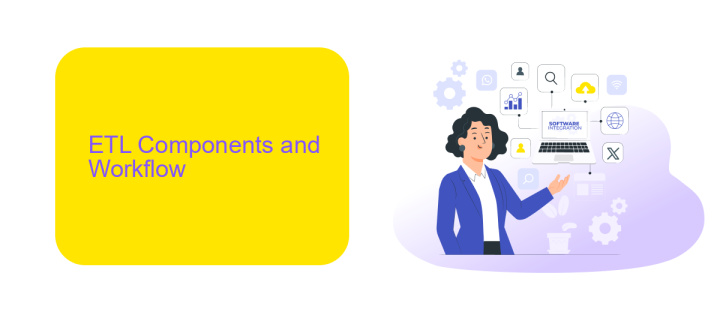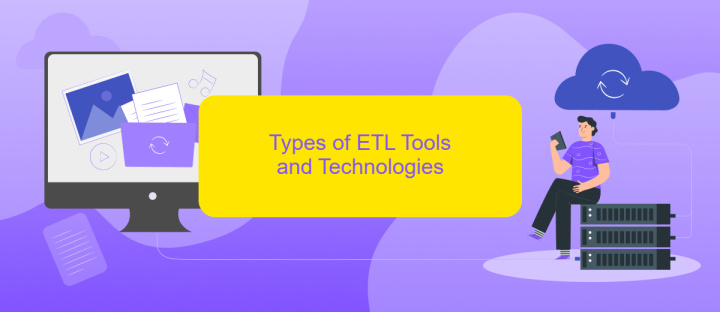ETL Process in Big Data
The ETL (Extract, Transform, Load) process is a crucial component in the realm of Big Data. It involves extracting data from various sources, transforming it into a suitable format, and loading it into a data warehouse for analysis. This process ensures that data is clean, reliable, and ready for insightful analytics, driving informed decision-making in businesses.
Introduction
The ETL (Extract, Transform, Load) process is a cornerstone in the realm of Big Data, enabling organizations to efficiently manage and analyze large volumes of data. This process involves extracting data from various sources, transforming it into a suitable format, and loading it into a data warehouse or other storage systems. The ETL process ensures data consistency, quality, and accessibility, which are critical for informed decision-making and strategic planning.
- Extract: Data is collected from multiple sources, including databases, APIs, and flat files.
- Transform: The extracted data is cleaned, enriched, and formatted to meet the requirements of the target system.
- Load: The transformed data is loaded into a data warehouse, data lake, or other destination for further analysis and reporting.
In today's fast-paced digital environment, tools like ApiX-Drive can streamline the ETL process by automating data integration from various sources. ApiX-Drive offers a user-friendly interface and robust features that simplify the setup and management of data pipelines, ensuring seamless and efficient data flow. This allows businesses to focus on deriving insights and making data-driven decisions without the complexities of manual data handling.
ETL Components and Workflow

The ETL process consists of three main components: Extraction, Transformation, and Loading. During the extraction phase, data is collected from various sources such as databases, APIs, and flat files. This raw data is often heterogeneous and requires careful handling to ensure that it is accurately gathered. Tools like ApiX-Drive can simplify this phase by automating the extraction of data from multiple sources, ensuring that the process is efficient and error-free.
In the transformation phase, the extracted data is cleaned, normalized, and enriched to make it suitable for analysis. This involves tasks such as filtering out irrelevant data, converting data types, and aggregating information. Finally, in the loading phase, the transformed data is moved to a data warehouse or a data lake where it can be accessed for further analysis and reporting. The ETL workflow ensures that data is consistently processed and stored, making it a crucial aspect of big data management.
Types of ETL Tools and Technologies

ETL (Extract, Transform, Load) tools and technologies are essential for managing and processing large volumes of data in Big Data environments. These tools help in extracting data from various sources, transforming it into a suitable format, and loading it into a target data warehouse or data lake for analysis.
- Open-Source Tools: Examples include Apache NiFi, Talend, and Pentaho. These tools offer flexibility and customization options for ETL processes.
- Cloud-Based Tools: Services like AWS Glue, Google Cloud Dataflow, and Azure Data Factory provide scalable ETL solutions with minimal infrastructure management.
- Commercial ETL Tools: Tools such as Informatica PowerCenter, IBM DataStage, and Microsoft SQL Server Integration Services (SSIS) offer robust features and enterprise-level support.
- Integration Services: Platforms like ApiX-Drive simplify the integration process by offering pre-built connectors and automation capabilities, making it easier to connect various data sources and destinations.
Choosing the right ETL tool depends on factors such as budget, scalability, ease of use, and specific business requirements. Open-source tools are cost-effective but may require more technical expertise, while commercial and cloud-based tools offer comprehensive support and scalability. Integration services like ApiX-Drive can significantly reduce the time and effort needed for setting up and managing data integrations.
ETL Best Practices

Implementing ETL (Extract, Transform, Load) processes in Big Data environments requires meticulous planning and execution to ensure data integrity and efficiency. One of the key best practices is to establish a robust data governance framework that includes data quality checks, metadata management, and compliance with data privacy regulations.
Another critical aspect is to optimize the performance of your ETL processes. This can be achieved by leveraging parallel processing, incremental loading, and efficient data transformation techniques. Additionally, consider using cloud-based ETL tools that offer scalability and flexibility to handle large volumes of data.
- Automate ETL workflows to minimize manual intervention and reduce errors.
- Monitor ETL processes in real-time to quickly identify and resolve issues.
- Utilize integration services like ApiX-Drive to streamline data transfer between disparate systems.
- Regularly review and update ETL processes to adapt to changing business requirements.
By following these best practices, organizations can ensure that their ETL processes are efficient, reliable, and scalable. Leveraging tools like ApiX-Drive can further enhance the integration capabilities, making it easier to manage data flows across various platforms and applications.
Conclusion
The ETL process is a fundamental component in managing Big Data, enabling organizations to transform raw data into actionable insights. By efficiently extracting, transforming, and loading data, businesses can make informed decisions, optimize operations, and drive innovation. The complexity of handling vast amounts of data from diverse sources necessitates robust ETL tools and frameworks, which are crucial for maintaining data integrity and consistency.
Integrating ETL processes with advanced services like ApiX-Drive can significantly enhance data workflows. ApiX-Drive offers seamless integration capabilities, allowing businesses to automate data transfers between various platforms and applications effortlessly. This not only streamlines the ETL process but also reduces the time and resources required for manual data handling. As Big Data continues to grow, leveraging such integrations will be essential for organizations aiming to stay competitive and agile in a data-driven world.
FAQ
What is ETL in the context of Big Data?
Why is ETL important for Big Data?
What are the main challenges in the ETL process for Big Data?
How can ETL processes be automated?
What is the role of data transformation in the ETL process?
Routine tasks take a lot of time from employees? Do they burn out, do not have enough working day for the main duties and important things? Do you understand that the only way out of this situation in modern realities is automation? Try Apix-Drive for free and make sure that the online connector in 5 minutes of setting up integration will remove a significant part of the routine from your life and free up time for you and your employees.

